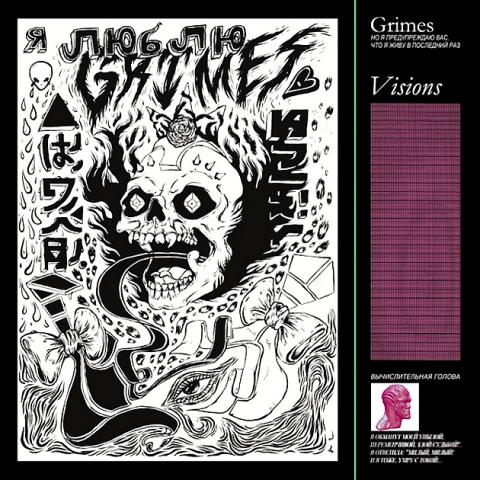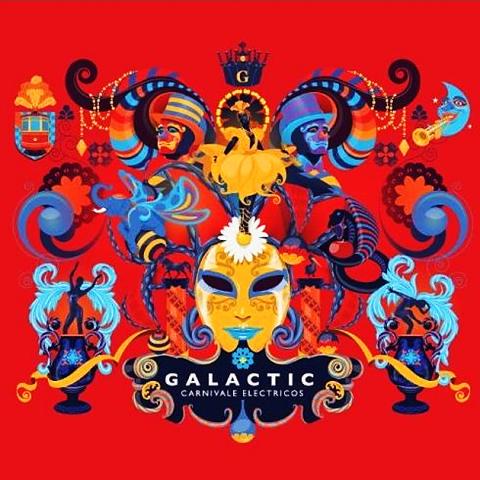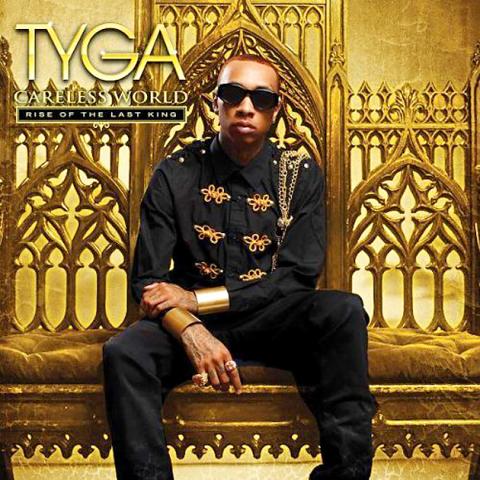Grimes
Visions
4AD

Visions, the third solo album by the Montreal musician Claire Boucher, who records as Grimes, starts out at full speed: Its opening track, Infinite Love Without Fulfillment, gallops hard, a collision of art-rock and electro-pop, all in service of Boucher’s blithe coos.
Grimes has been releasing music for only two years but has already established a signature approach. It’s insular and unnerving, a blend of the naive and the erotic. At times, though, it’s been almost irredeemably precious, largely because Boucher’s tendency toward vocal experimentation wasn’t leavened by any thoroughgoing embrace of melodic structure.
Visions irons out that kink admirably: It’s easily Boucher’s best work, and one of the most impressive albums of the year so far. Boucher is jubilant here, her multitracked vocals (which can recall Julianna Barwick) both an effective sonic strategy and also an emotional one. She has a lovely coo to her voice, especially on Be a Body. And she flaunts a range of influences, as on Symphonia IX (My Wait Is U), which seemingly owes debts to both Bollywood playback singers and Siouxsie Sioux.

Previously Boucher has been lost in abstractions; on this album she uses many of the same touchstones, but more directly. Circumambient is full of unlikely competing sounds — crackling white noise, tribal drums, airplane roars — that resolve themselves into coherent electro-soul. The bells on Vowels = Space and Time echo the freestyle music of the 1980s. And just maybe there’s a nod to Toni Basil on “Genesis.”
— JON CARAMANICA
Galactic

Carnivale Electricos
Anti-
Every New Orleans band has to reckon with Mardi Gras, which took place Tuesday. Galactic, formed in New Orleans in 1994, takes a wide-angle view on Carnivale Electricos, writing and transforming Carnival songs not only from New Orleans and Cajun country, but also from another Carnival epicenter: Brazil.
Onstage, Galactic is a first-rate funk band. In the studio it has become a perpetually recombinant group of musicians, producers and conceptualizers, hooking up with collaborators from New Orleans and far beyond. The guest list on Carnivale Electricos extends from New Orleans to Rio de Janeiro, in tracks that morph across time, space and cultures. Carnivale Electricos is brimming with ideas; it’s also one raw, rowdy party album.
Galactic doesn’t enforce any trademark sound. While New Orleans funk is laced through the album, it’s freely collaged with all sorts of other things. So Ha Di Ka, featuring Big Chief Juan Pardo and his Mardi Gras Indian tribe, Golden Comanche, isn’t just one more Indian chant backed by a band; it’s got fat-bottomed electronics, a deranged psychedelic guitar and explosive samples grapping with Galactic’s keyboard funk.
Voyage Ton Flag, alluding to an old Creole Carnival song from bayou country, crosscuts between a distorted guitar groove, an electronically stuttered Creole vocal (from Steve Riley) and bits of Clifton Chenier’s zydeco accordion. A remake of the 1960 Mardi Gras standard, Carnival Time — heartily sung by its songwriter and original performer, Al Johnson — throws together brass-band horns, Latin percussion and a determinedly funky clavinet.
Galactic is a more straightforward backup band for the hard-headed, humorous rappers Mystikal and Mannie Fresh in Move Fast, and for Cyril and Ivan Neville in Out in the Street. It meshes some wah-wah guitar with the hefty brass of the KIPP Renaissance High School Marching Band in Karate, and leans toward hard-bop in the instrumental Attack.
The Brazil Carnival connection is forged in O Coco da Galinha, a collaboration by Galactic and Moyseis Marques, a samba singer from Rio de Janeiro, that meshes New Orleans and Rio rhythms. A version of Carlinhos Brown’s Magalenha features a New Orleans Brazilian band, Casa Samba; Galactic zaps the song’s Bahian beat with synthesizer swoops. And the 57-second Guero Bounce places a bluesy harmonica over Brazilian percussion and New Orleans’ hip-hop-tinged bounce beat.
In other words, variety reigns. Galactic doesn’t set out to document Mardi Gras and Carnival traditions, but to extrapolate from them every which way, and the Carnival spirit of wide-open possibility comes through.
— JON PARELES
Tyga
Careless World
Young Money/Cash Money/Universal Republic
The most disposable hip-hop hit in recent months has been Tyga’s Rack City, a slinky, sleazy snake of a strip-club anthem, all vibrating bass tones and filthy come-ons. It’s a grower — empty on first listen, more and more primal over time. The beat, though, is the star; Tyga is merely percussive drizzle atop it.
This Compton, California, rapper has been on the B team of Lil Wayne’s Young Money crew for some time, displaying the occasional flash of charm, as on the hit single BedRock. Last year he was nominated for a Grammy for his collaboration with Chris Brown and Kevin McCall, Deuces.
Careless World is Tyga’s major-label debut, and it sounds like it. Even though he remains a cipher, his surroundings are lush. A collaboration with Nicki Minaj has a gyrating beat built on a sea of digitized giggles, and smooth gospelesque coos drive Do It All. Those songs, and several others on this album, are produced by Jess Jackson, who proves a strong match for Tyga, supplementing his hollowness with density and feeling.
Tyga is a labored rapper at best, though he’s capable of a variety of cadences — he’s bouncy on Potty Mouth and pleasingly nasal on Faded. But his method can’t redeem his sometimes clunky word jumbles: “You fold up under pressure/ I’m good, straighter than stretchers” on I’m Gone; “The world so cold you gonna need a Moncler” on This Is Like.
— JON CARAMANICA

Seven hundred job applications. One interview. Marco Mascaro arrived in Taiwan last year with a PhD in engineering physics and years of experience at a European research center. He thought his Gold Card would guarantee him a foothold in Taiwan’s job market. “It’s marketed as if Taiwan really needs you,” the 33-year-old Italian says. “The reality is that companies here don’t really need us.” The Employment Gold Card was designed to fix Taiwan’s labor shortage by offering foreign professionals a combined resident visa and open work permit valid for three years. But for many, like Mascaro, the welcome mat ends at the door. A

Last week gave us the droll little comedy of People’s Republic of China’s (PRC) consul general in Osaka posting a threat on X in response to Japanese Prime Minister Sanae Takaichi saying to the Diet that a Chinese attack on Taiwan may be an “existential threat” to Japan. That would allow Japanese Self Defence Forces to respond militarily. The PRC representative then said that if a “filthy neck sticks itself in uninvited, we will cut it off without a moment’s hesitation. Are you prepared for that?” This was widely, and probably deliberately, construed as a threat to behead Takaichi, though it

Nov. 17 to Nov. 23 When Kanori Ino surveyed Taipei’s Indigenous settlements in 1896, he found a culture that was fading. Although there was still a “clear line of distinction” between the Ketagalan people and the neighboring Han settlers that had been arriving over the previous 200 years, the former had largely adopted the customs and language of the latter. “Fortunately, some elders still remember their past customs and language. But if we do not hurry and record them now, future researchers will have nothing left but to weep amid the ruins of Indigenous settlements,” he wrote in the Journal of

If China attacks, will Taiwanese be willing to fight? Analysts of certain types obsess over questions like this, especially military analysts and those with an ax to grind as to whether Taiwan is worth defending, or should be cut loose to appease Beijing. Fellow columnist Michael Turton in “Notes from Central Taiwan: Willing to fight for the homeland” (Nov. 6, page 12) provides a superb analysis of this topic, how it is used and manipulated to political ends and what the underlying data shows. The problem is that most analysis is centered around polling data, which as Turton observes, “many of these